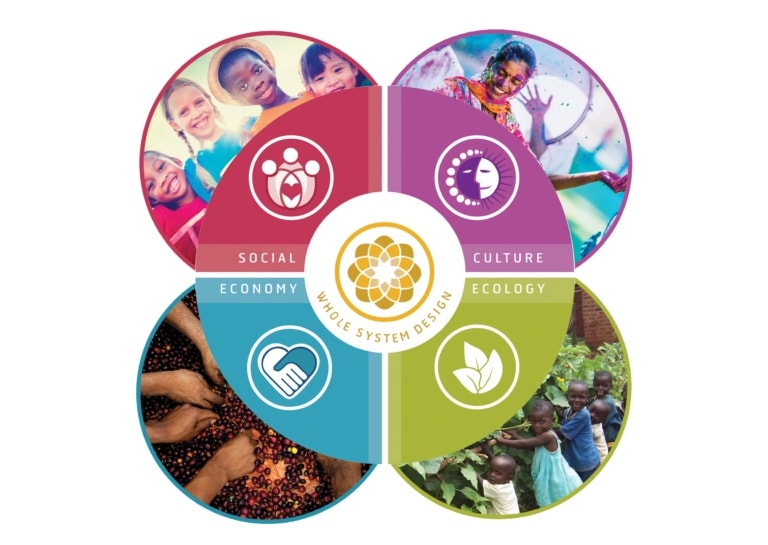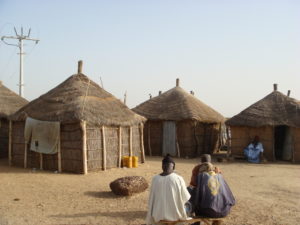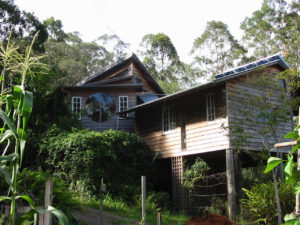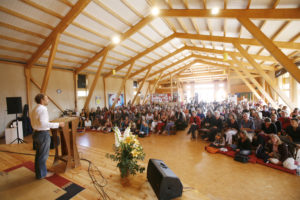Ecovillage
An ecovillage is an intentional, traditional or urban community that is consciously designed through locally owned, participatory processes in all four dimensions of sustainability (social, culture, ecology and economy) to regenerate their social and natural environments.
GEN’s definition of ‘ecovillage’ is broad, allowing for many different kinds of communities and projects to be recognised. Because each ecovillage is designed by the people who live there, according to their vision, context, culture and interests, no two are alike. Nevertheless, GEN categorized them into three general categories:
- urban – communities or eco-neighbourhoods with a common vision to reinvent life in the city to become more sustainable, collaborative and participatory;
- traditional – existing rural villages and communities that decide to design their own pathway into the future, using participatory processes to combine life-sustaining traditional wisdom and positive new innovation
- intentional – created by people who come together afresh with a shared purpose or vision.
GEN evolved organically to bring together this rich and diverse tapestry of ecovillages that had grown independently around the world. You can check out our ecovillage database and our book to learn more.
Today, GEN reaches around 6000 communities in 114 countries on all continents. We define ‘reach’ by being included on the Ecovillage Map, as well as communities in contact with a GEN Ambassador or National network, or a person within the community is receiving the GEN newsletter. In 2019, we did a broader outreach with a goal to reach 10,000 communities which we believe exist in various forms. In 2025, we are redesigning our map and database, with a vision to provide much more information.
We have learned that, while there is no one way of being an ecovillage, there are three core practices shared by all:
- Being rooted in local participatory processes
- Integrating social, cultural, economic and ecological dimensions in a whole systems approach to sustainability
- Actively restoring and regenerating their social and natural environments
For communities wanting to join GEN, we have developed Guidelines for Ecovillage Recognition,
Regeneration
The Global Ecovillage Network embraces a holistic approach to sustainability, integrating the Social, Cultural, Ecological and Economic areas of existence. At the centre, we place the practice of integral design.
The 4 aspects of regeneration and the central path of integral design make up the path of regeneration – our road map to the creation of ecovillages – intentional or traditional communities in urban and rural locations, using participatory processes to integrate the ecological, economic, social, and cultural areas in order to regenerate social and natural environments.

Here you can discover all 32 Ecovillage Design Card in a virtual presentation on the Map of Regeneration, where you can zoom into each of the Areas (Portuguese version, Japanese version).
Social Regeneration
Restoring trust, community and institutions allows us to build a solid foundation for regenerative practices:

- Nurture diversity and cohesion for thriving communities
- Develop fair, effective and accountable institutions
- Practice conflict facilitation, communication and peacebuilding skills
- Empower collaborative leadership and participatory decision making
- Ensure equal and lifelong access to education for sustainability
- Promote health, healing and wellbeing for all
Cultural Regeneration
Preserving and enriching our diverse traditions, practices and crafts provides us with the means for collective regeneration:

- Clarify vision and higher purpose
- Nurture mindfulness and self-reflection
- Enrich life with art and celebration
- Honor indigenous wisdom and welcome positive innovation
- Engage actively to protect communities and nature
- Reconnect to nature and embrace low-impact lifestyles
Ecologic Regeneration
The restoration of our environment and biodiversity is naturally a key aspect of regenerative practices:

- Grow seeds, food and soil through regenerative agriculture
- Clean and replenish sources and cycles of water
- Move towards 100% renewable energy and transport
- Innovate and spread green building technologies
- Work with waste as a valuable resource
- Increase biodiversity and restore ecosystems
Economic Regeneration
In order to support other aspect of regeneration, we must rethink our economic practices as well:

- Reconstruct the concepts of wealth, work and progress
- Commit to responsible production, consumption and trade
- Cultivate social entrepreneurship for local regeneration
- Increase economic justice through sharing and collaboration
- Ensure equitable access to land and resources
- Use banks and currencies that strengthen communities
Integrated Regeneration
Some principles apply to all dimensions of regeneration, so bringing them together holistically is critical:

- Learn from nature and practise whole systems thinking
- Identify assets, needs and leverage points
- Adapt solutions to scale and context
- Be aware of privilege and use it for the benefit of all
- Build alliances across all divides
- Engage all stakeholders in designs for the future
- Spread core patterns of regeneration
- Listen to the feedback of the world
Glossary
Here is a detailed list of other concepts relevant to GEN:
ECO: Comes from the Greek Oikos – relating to family, home and the land surrounding the home – planet
- In Economy – Eco-Nomos: the concept of natural law
- In Ecology – Eco-Logos: the divine reason implicit in the cosmos, ordering it and giving it form and meaning

VILLAGE: A clustered human settlement, larger than a hamlet but smaller than a town, with a population ranging from a few tens to a few thousand. Though often located in rural areas, the term urban village is also applied to urban neighborhoods.
COMMUNITY: The word “community” comes from the Latin “communis”, which means “shared in common” and typically refers to:
- A group of people living in the same place
- A group of people sharing certain attitudes and interests

INTENTIONAL COMMUNITY: A group of people who intentionally live together or share common facilities and co-create at least some of their social, economic, ecological and/or cultural relationships.
There is an overlap between intentional communities and ecovillages, yet they are not the same. Traditional ecovillages are not intentional communities. Some intentional communities are too small to be recognised as ecovillages.
ECOVILLAGE: A rural or urban community that is consciously designed through locally owned, participatory processes in all four dimensions of sustainability (social, culture, ecology and economy) to regenerate their social and natural environments.
GEN’s criteria for recognizing a community as an ecovillages:
- subscribe to the Ecovillage Principles
- are already implementing solutions in at least one of the Dimensions of Regeneration, with an intention to spread implementation to all four dimensions (whole systems design)
- have a population ranging from at least 20 to several thousand inhabitants
- have been in existence for at least 2 years
- are enrolled in the GEN Ecovillage Map database
GEN knows that an Ecovillage is a process, not an outcome. Projects and communities do not need to call themselves ‘ecovillages’ to be recognised as such.
ASPIRING ECOVILLAGE: An intentional or traditional community which is on its way to becoming an ecovillage, but does not yet meet all the criteria of being recognised as an ecovillage.

SHOWCASE ECOVILLAGE: An Ecovillage that has been identified by their region and/or GEN as exemplary. Showcase Ecovillages have a designated GEN Ambassador and are open to visits from government representatives, school classes, etc. They participate in the Ecovillage Impact Assessment and are specifically represented in GEN publications.
ECO COMMUNITIES: Eco-communities are ‘small ecovillages’, with a population of less than 20 inhabitants, but still consciously designed through locally owned, participatory processes in all four dimensions of sustainability (social, culture, ecology and economy) to regenerate their social and natural environments.
ECO PROJECTS: Initiatives of various sizes that inspire, educate and foster ecovillage lifestyles.
Examples:
- Learning and demonstration centres, like CAT (Centre for Alternative Technology in Wales, UK)
- Green schools
- Permaculture centres and farms
- Restoration sites

NATIONAL ECOVILLAGE NETWORK: A national node of GEN that can be formed once there are at least three Ecovillages in one country. A national ecovillage network aims to be registered as separate NGO (or in some cases fiscally sponsored by registered like-minded NGO’s or non-profit organizations) in their country.
